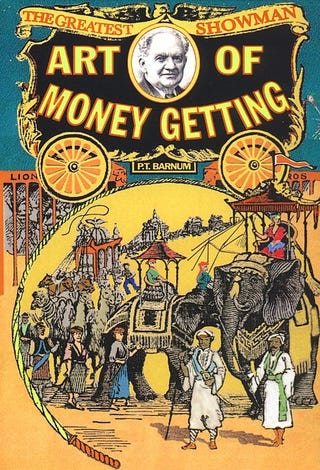hank said
August 2 edited August 2 Flag
A few morsels from Ed:
"Some men are born mediocre, some men achieve mediocrity, and some men have mediocrity thrust upon them. - Joseph Heller"
Will this be mediocroty thrust upon us? As in;
Hi ! I'm from the government,and I'm here to help you.
The New School's Teresa Ghilarducci weighs in on mandated savings, risk aversion and avoiding fees
Aug 5, 20
15 @
10:46 am
By Bloomberg News
Retirement policy wonks don't usually get hate mail. But in 2008, Teresa Ghilarducci, an economics professor at the New School for Social Research, proposed replacing 40
1(k) plans and their income tax break with a mandated government savings plan for all workers. The blowback from some Tea Partyers was so intense that the school's chief of security gave her his cell phone number.
The plan called for mandatory savings of 5% of salary, with the government handling all investment decisions, guaranteeing a rate of return above inflation, and ultimately paying out the retirement money in a lifelong annuity. It's pretty radical. Conservatives hate it. She continues to advocate for it, though she won't comment on whether she has discussed it as one of the cadre of economists advising Hillary Clinton in her presidential bid.
About
15 years ago, Ms. Ghilarducci started to focus on getting to retirement in fighting shape.
“It was a pure money play,” she said. “I lost some weight and am devoted to my seven-minute workout app and weight training at the gym." It's not about vanity, she said, "but the money I hope to save if I can avoid illnesses such as diabetes and osteoporosis.”
Ms. Ghilarducci said if she didn't have access to TIAA-CREF she'd park her money in Vanguard index funds.
“It's against my religion to invest in actively managed funds,” she said. "I suspected they were fishy when I was younger, and now we have plenty of evidence that passive [investing] is better."
After doing some intensive research on long-term care insurance, she decided to pass. She cites the high premiums on the policies and new research that suggests that budget-busting extended care will be needed by fewer elderly people than previously thought.
“Pushing for Medicare to expand to cover long-term care is my best bet, and honestly, it's everyone's best bet,” she said.
Many retirement experts and myriad online tools suggest aiming for retirement income that can replace 70% to 80% of your pre-retirement income. Ms. Ghilarducci, who has based her plan on living until 92, is out to replace
100%.
http://www.investmentnews.com/article/20150805/FREE/150809967/this-retirement-expert-got-death-threats-for-her-policy-reform-ideasWHO INVITED TERESA GHILARDUCCI TO THE TABLE?
Lunch and populism with Hillary Clinton’s least-likely adviser.
BY NANCY COOK
This article appears in the June 27, 20
15 edition of National Journal Magazine as Who Invited Teresa Ghilarducci to the Table?.
Ghilarducci's big idea, then and now, is to create government-run, guaranteed retirement accounts ("GRAs," for short). Taxpayers would be required to put 5 percent of their annual income into savings, with the money managed by the Social Security Administration. They could only opt out if their employer offered a traditional pension, and they wouldn't be able to withdraw the money as readily and early as with a 40
1(k). The government would invest the money and guarantee a rate of return, adjusted to inflation.
To pay for the program, Ghilarducci calls for ending tax breaks for people with 40
1(k)s —breaks that, according to her and others' research, now go primarily toward wealthier Americans. Instead, every taxpayer would receive a $600 refundable tax credit that would go toward the 5 percent annual contribution.
Plenty of economists and policymakers—especially on the state and local levels—have proposed some version of government-run retirement accounts. But no plan has been quite so grandly liberal as Ghilarducci's, which would create a new federal program easily as massive as the one wrought by the Affordable Care Act—and do it by mandating that Americans contribute 5 percent of their earnings. "You don't like mandates? Get real," she wrote in a 20
12 Times op-ed. "Just as a voluntary Social Security system would have been a disaster, a voluntary retirement account plan is a disaster."
http://www.nationaljournal.com/magazine/teresa-ghilarducci-hillary-clinton-adviser-20150626